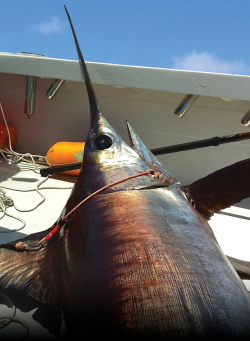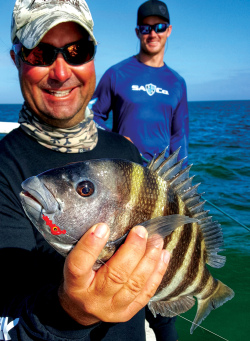Shallow waters of fifty-feet or similar depths offer some of the most accessible and productive bottom fishing opportunities, where trophy grouper, snapper, and other structure-oriented species concentrate around reefs, ledges, and hard bottom areas. This intermediate depth allows for precise boat control and effective fish-fighting techniques while targeting quality fish that aren't pressured by deeper-water fishing methods.
Bottom Fishing Shallow Waters
(00:28:46)Bottom Fishing Shallow Waters
Bottom fishing in 50 feet of water or thereabouts requires a different approach than deep-water techniques, combining the precision of shallow-water fishing with the structure-reading skills needed for offshore success. Your electronics become critical tools for identifying the subtle bottom changes and fish-holding structure that make the difference between a slow day and consistent action. The key lies in understanding how fish position themselves relative to structure at this depth and adapting your tackle and presentation accordingly.
- Use electronics strategically - If you have a boat with a side-finding fishfinder, when you arrive at a likely location like an oyster bar or a reef site with oyster balls, spend some time idling slowly through the area to ID the best structure. Create waypoints where you spot clusters of reef material or fish
- Optimize tackle for intermediate depths - Select medium action, 6- to 7-foot graphite spinning or baitcasting rods that provide enough backbone for structure fishing while maintaining sensitivity for detecting subtle bites
- Choose appropriate sinker weights - Use 2-4 ounce sinkers that allow you to feel bottom contact while maintaining bait control in current, as the heaviest sinkers and or jig heads I've used are 2 ounces. At 3 ounces the tips of the rods are pulled down and lose the characteristics needed to fish effectively
- Target specific structure zones - In 50 to 90 feet, the fish are smaller, anywhere from 1 to 4 pounds. In deeper water, they're 5 to 10 pounds, but also 20 to 30 pounds, making 50-foot depths perfect for consistent action with quality fish
- Position precisely over structure - If you're fishing over isolated structure like a wreck, or you've drift-fished until locating a specific hotspot within a larger area, stick to it like glue. This means anchoring over the structure
- Select proven bait combinations - Use frozen bait works very well for grouper, sometimes even better than live bait. Spanish sardines are a top bait, as they put out a lot of oil and scales as they thaw. Squid is a great universal bait that catches everything that swims
- Apply proper retrieval techniques - When saltwater fishing over reefs or structures, it's common practice to let the bait hit the bottom and reel up about a foot off the bottom. This is done primarily to prevent hang-ups and to make your bait easier to find for predators
User Reviews
There are no reviews yet.Mike Hennessy
Mike Hennessy is a versatile game fishing expert renowned for his mastery of offshore, inshore, fly, and freshwater techniques. His accomplishments include a record 1245lb Blue Marlin and victory in the Bisbees Black and Blue tournament. He hosts global fishing expeditions while promoting conservation, owns an eco-resort in Costa Rica, and runs Namotu Island Resort in Fiji. Hennessy currently specializes in light tackle fishing for Black Marlin and Yellowfin Tuna.
Read more



